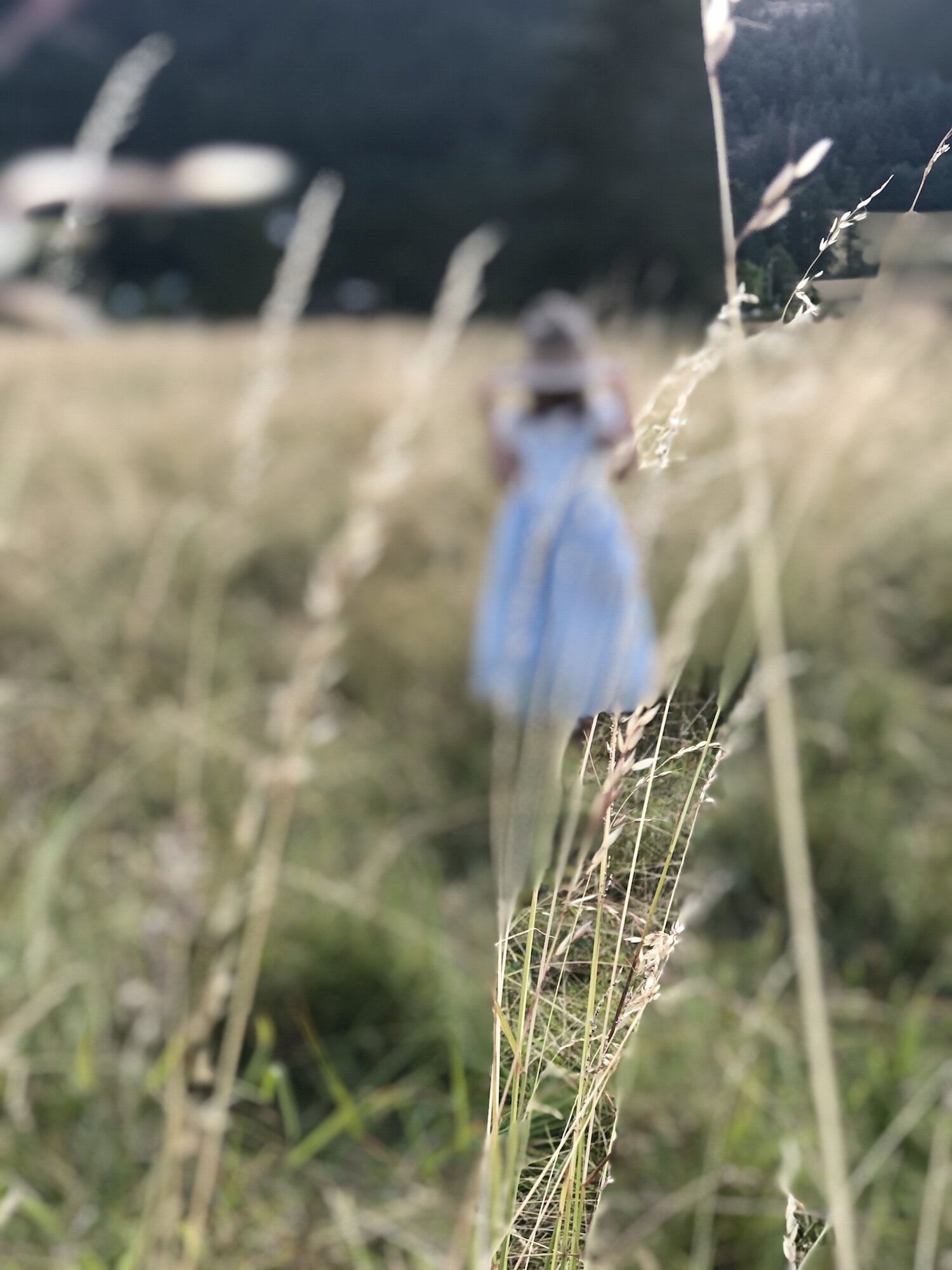“It is the living that turn and chase the dead. The long bones and skulls are tumbled from their shrouds, and words like stones thrust into their rattling mouths.”
—Hillary Mantel, Wolf Hall
Shroud by Geddes, acrylic, charcoal and rice paper 80 X 42
Walking into the first solo exhibit of Geddes’ work in Susan Mustard’s new Eastsound gallery was life-affirming. That experience paralleled the experience of setting foot on Orcas for the first time. Everywhere you turned, you found yourself in awe of what unexpected beauty nature had woven at that particular moment. In the case of Geddes’ exhibit, it was explosive color on display, and evocative manmade beauty being shared with us. More than that, it was Geddes’ soul, maybe even a glimpse of lives past, rendered for us.
Geddes works in the realm of mythology. The artist’s larger-than-life paintings include representations of monkeys (mind), martyrs (spirit), mummies (body), and now goddesses. They begin as powerful symbols that represent something profoundly personal and cathartic to Geddes, but by painting’s end they represent something more universal. While the work is wildly original, Geddes explains that the “mystical and bold emotionalism of Goya, Grunewald, and Bacon” inspires her. “They portray startling, shocking images, yet they have great tenderness and beauty,” she adds. “It is this tradition to which I wish to add my voice.”
And, so Geddes has added her voice, a strong and complete one at that. Although Geddes’ work is practically an island-kept secret, it won’t be for long. It’s easy for one to imagine her work hung next to Francis Bacon’s in New York’s MOMA or London’s Lefevre Gallery. Like the work of the artists that inspire her, Geddes’ paintings leave a lasting impression that is oftentimes visceral and haunting. Her Madness quadriptych, created after a friend went insane, was an exorcism of sorts for her, and a perfect example of her process.
Years before Geddes ever painted, she would tell friends: “I know I’m a painter.” However, with kids to raise and a busy career, she didn’t have the energy to paint, but she did have faith that it was only a matter of time. After a long career as a textile artist and clothing designer, which included traveling back and forth to India for decades, her children—she is mother to artist and Springboard owner Libi Geddes and aunt to sculptor Aleph Geddis (Geddes changed the family spelling of the surname) who appears in the pages of Ode—grew up and later in life, Geddes was accepted to the San Francisco Art Institute. Let it be known though that Geddes did not attend art school because she didn’t know how to paint; she went because she couldn’t draw, and for what she had in mind, drawing was vital.
Shroud, drawn in charcoal and finished with acrylic and rice paper, is part of what Geddes refers to as the Bog series, works inspired by the hundreds of mummified human bodies discovered in the raised peat bogs of Northern Europe. These men and women (and a few children) were killed or sacrificed in rituals thousands of years ago, and they have captured Geddes’ imagination. When she first gazed into the face of a well-preserved bog person on exhibit in the UK, she felt as if she could see their soul. Geddes’ Celtic Pagan ancestors believed the bogs, half-earth, half-water, and open to the heavens, were a portal to the Otherworld. For her, they represent the mysteries of the shifting borderland between life and death.
Shroud is more subdued than other works in the Bog series; it was created during a period when Geddes was ill and hospitalized for ten days. She had been working on the piece before being admitted to the hospital. “When I was released, and I knew I was going to live, I finished her,” Geddes shares. That protective cocoon quality of a shroud enveloping her felt like “coming home” to her.
CAUGHT acrylic, charcoal 41 X 29
The stunning artwork entitled Caught also has a lighter touch than much of Geddes’ other work. The lone figure in the painting, done with acrylic and charcoal, depicts a figure at once being held but being released, too. According to Kate, the “mystical monkey is often a symbol of human frailty and strength,” and in her own paintings, they come to “portray the emotional life and struggles we face in the world.” There is always a compelling and cathartic story behind every painting Kate creates, and we are so grateful that this immensely talented and prolific painter has chosen Orcas Island as the place where she shares those stories first.
To discover more stunning works by Geddes, visit www.geddesart.com.



















